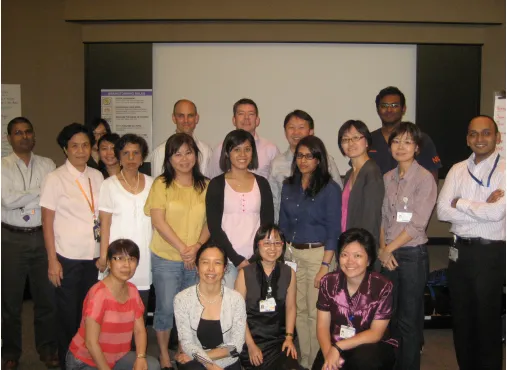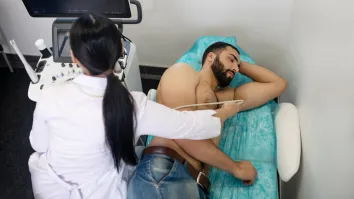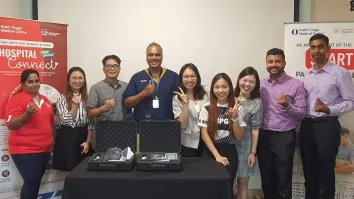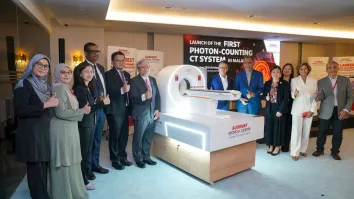
Trigger finger: hospitals reduce adverse events
You trust you’re in good hands when you are in a hospital for treatment. But what happens when hospitals turn out to be dangerous places due to medical errors, resulting in what people in the medical community call “adverse events” (AEs)?
The good news is that top hospitals around the world are taking steps to address the issue. Responding to this concern, the United Statesbased Institute for Healthcare Improvement (IHI) formulated a Global Trigger Tool for Measuring AEs, to effectively measure the overall harm level in any health care organization and improve health care worldwide.
Improving health care
This tool, which provides health care organizations with a methodology and training information to identify various possible AEs, can help hospitals identify and reduce events that can cause harm to their patients.
At present, the IHI Global Trigger Tool has been adopted and is in wide use by hospitals around the world to evaluate AE rates while taking measures to improve patient safety.
Among the hospitals that have adopted Global Trigger Tool Programs— resulting in dramatic success — are the National University Hospital in Singapore (NUH) and St Luke’s Medical Centre-Global City in the Philippines.
NUH: Increasing survival rates
NUH reviewed delays in appropriate management of deteriorating patients in general wards. It noted a number of problems in treating its general ward patients, including the failure to detect and escalate medical conditions that result in AEs, rather than the lack of response once a crisis has been recognised. There were delays and failures to treat patients based on hospital audits of cardiac arrest and severe sepsis, among others. Even the hospital’s nursing and junior medical staff said they did not feel their patients were safe, especially outside office hours. They also noted communication gaps between junior doctors and nurses when patients are experiencing various conditions leading to AEs and with no explicit monitoring plan.
Because of these issues, key stakeholders in the hospital, comprising clinicians, nursing, allied health and administrative staff, conducted a rapid improvement event in January 2012. NUH adopted a Trigger Program, a simple communication and recognition tool to help first-responder care teams (junior doctor and nurse) identify, evaluate, escalate, and institute management in general ward patients who are potentially unstable.
NUH conducted studies related to the project, redefined standard workflow and documentation, organized a training program for its junior nurses and doctors, and even redesigned the colour-coded vital signs chart and also created a clinical pathway for patients having abnormal vital signs. It conducted mass awareness campaigns for the staff and assigned nursing champions and clinicians to evaluate and strengthen the program. A successful pilot program was followed by a hospital wide roll-out to adult inpatient general wards in September 2012.
Results later showed that AE rates were reduced from 9.4 per cent in 2012 to 8% in 2013. The unexpected mortality rates decreased from 11.3% in 2012 to 9.3% the following year. The survival rates of all resuscitated patients with pre-crisis triggers jumped from 40% in the fourth quarter of 2011 to 54% in the same period in 2013. There was a jump in trigger rates from an average of three to 16.6 per 1000 deaths and discharges.
“The success of the program is attributed to support from senior management and the initial involvement of all key stakeholders,” says Dr Sandhya Mujumdar, NUH’s Deputy Director of Medical Affairs. “Well-defined roles and responsibilities among the nurses, junior, and senior doctors built rapport, respect for each other, and good teamwork.”
“Results show that the program has been effective to a certain extent, and the key to its real success lies in continuously improving and allowing the culture of calling triggers to become pervasive,”she adds.
St. Luke’s: Fewer admissions with adverse events
St. Luke’s started its Global Trigger Tool program in July 2013 as the hospital’s proactive solution to address the growing challenge that AEs and harms inflict in their institution, with a focus on unreported AEs and harms.
“The Global Trigger Tool is a demonstration of our commitment and dedication to learn more from previous adverse events identified and to use the information to prevent these from recurring,” says Dr Alejandro Dizon, St Luke’s Medical Centre chief quality officer.
“The Global Trigger Tool presents both a retrospective and preventive method in improving patient safety, where the data gathered is used to initiate proactive and preventive improvement strategies.” St Luke’s created Global Trigger Tool teams composed of nurses, physicians, and pharmacists who were trained by the hospital’s Quality and Patient Safety Group to review and identify triggers to AEs based on patient records.
These reviews were then adopted and implemented as part of the hospital’s overall patient care policy to establish preventive and proactive measures for future cases. GTT teams were created from a group of Patient Safety Officers (nurses, pharmacists and physicians) who were trained by the Quality and Patient Safety Group.
“The implementation of the Global Trigger Tool was initiated in our hospital as a proactive solution using retrospective information gathered to address the growing challenge that adverse events and harms inflict in our institution, with a focus on unreported adverse events and harms,” Dizon says.
A project progression model was created from the data gathered to monitor and analyse patient risk events and reduce medication errors and drug AEs, among others, with the hope that it would transfer to improved clinical outcomes and decrease in AE occurrence. Other activities as part of the program included developing performance improvement team projects related to patient care and medication errors, risk reduction management committee meetings, an internal and anonymous reporting system designed for the recognition and reporting of safety issues or incidents, and an internal competition for International Patient Safety Goals to promote stronger awareness among the staff.
The program has resulted in improved clinical outcomes and a decrease in AEs. In a program evaluation review conducted from Aug 2013 to March 2014, AEs decreased from an average of 140 in 2013 to 97 in the first quarter of 2014. There was an average of 53 AEs per 100 admissions in the first quarter of 2014, compared with the average of 56 the previous year. In 2013, there was an average of 31 per cent of admissions with AEs, whereas in the first quarter of 2014, the average was only 23 per cent.
“The Global Trigger Tool ensures patients that their safety and the quality of care they receive are of utmost importance,” says Dizon. Contributing factors, according to St. Luke’s, may be attributed to initial improvements such as the development of performance improvement team projects related to patient care and medical errors; root cause analysis conducted for medical errors; Risk Reduction Management Committee meetings conducted about patient safety incidents, among others.
“We want to assure our patients better safety through proactive measures that are developed in relation to the collected data,” he adds. Dizon says that the hospital is committed to putting in place a culture of safety for its patients, who can rest assured that safeguards and improvements are being developed. St Luke’s is the first and only hospital in the Philippines to implement and use the Global Trigger Tool, according to Dizon.



















 Advertise
Advertise





